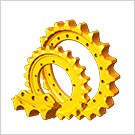Vematrack sprockets and segments for excavators & bulldozers
VemaTrack delivers sprockets and segments for a very complete range of machines, from 0.8 to 100 tons. The sprockets and segments are suitable for both excavators and bulldozers.
The sprockets are first molded or forged and subsequently processed, giving them a special heat treatment. If steel does not contain sufficient quantities of carbon, then it becomes brittle during the hardening process. If only the surface is hardened, then the sprocket or segment will wear very fast over time. Therefore the sprocket teeth are hardened by means of induction hardening. VemaTrack segments are forged with precision, finished and hardened under special conditions.
Sprockets and segments, also known in the branch as cogwheels, run between the excavator or bulldozer chain links. Moreover, this undercarriage component runs over the bushing that connects the two links of a chain. The cogwheel is installed around the machine’s drive gear and only serves to drive the chain, so it does not bear any of the machine’s weight.
The difference between sprockets and segments
Sprockets are metal cogwheels that consist of a metal inner ring with bolt holes or a compression hub and a gear ring in one unit. Sprockets can be screwed on directly, or pressed onto the machine’s drive hub, and they are usually used for excavators.

Just as sprockets, segments also consist of a metal inner ring with bolt holes and a gear ring. Unlike sprockets, segment groups exist from individual segments which make up the sprocket for the undercarriage of bulldozers. This means that the segments can be exchanged without dismantling the track link.
How can you recognise the wear patterns of sprockets and segments?
Sprockets and segments should always run in line with the chain’s pitch. If the sprocket or segment is worn, the points of the gear ring will become sharp. This is because there is play between the pins and the bushings. Another common wear pattern for sprockets and segments is the lateral wear. This is caused by (among others) worn chain guides, a twisted undercarriage, or poor guiding of the front wheel. It can also be caused by the filtration of hard materials between the bushings and the cogwheel, or by incorrect alignment. To limit wear from the infiltration of soil (packing), we make sand notches in our sprockets.

Sometimes the machine’s sprockets or segments are sharp, but the track links appear to be in reasonable condition. We are frequently asked whether the sprockets still need to be changed. The only reason why a sprocket becomes sharp is through the chain’s increased pitch. An increase in pitch creates more play between the pin and the bushing. As a result, the chain’s bushing no longer runs in line with the hollow part of the sprocket. This causes wear on the sprockets and the points become sharp. So never only replace a sprocket. If a track drive sprocket from an excavator with dry chains needs to be replaced, then the track links should always be replaced as well, and vice versa.
Because bulldozers carry out a lot of mobile work, they need oil lubricated chains in combination with segments. The wear of the segments is usually found in the cup between the segment points. The pitch can only increase when the oil lubricated chain leaks, and the points of the segments will then become sharp. If the oil lubricated chain does not leak, then it is better to replace the segments before the end of the cycle; that way the undercarriage can be used for a few hundred more hours.
Would you like more information, or request a quote?
Are you looking for machine sprockets or segments for your excavator or bulldozer? Look to the right side of the page (or beneath) to the quotation form in the list of machine brands and find the brand you are looking for. First select your brand and type of machine, and then select the products for which you would like to receive an obligation-free quotation.
Why choose VemaTrack undercarriage parts?
- Fast delivery
- Largest supply
- Always competitive prices
- All brands & types
- Reliable
I am looking for sprockets or segments for the brand:
Products that get the job done
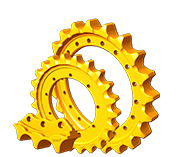
Sprockets &
Segments
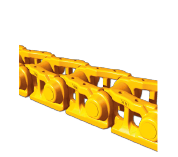
Track links

Bottom &
Top rollers
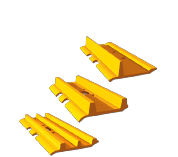
Track shoes

Rubber tracks

Rubber pads

Idlers

Tension devices
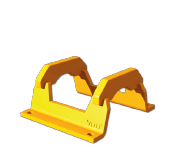
Track guards

Bucket teeth &
Wear parts

Bolts & Nuts
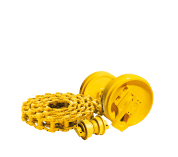
Complete undercarriages

